1960s
Can fear cure cancer?
In 1962, East German researchers conducted a bizarre medical experiment in an attempt to find out if fear could cure cancer. They inoculated some "mice, rabbits, rats, and cocks" with cancer cells. Then they put these animals into a cage which they lowered "into a zoo-like enclosure where 30 ravenous African polecats paced for food. The polecats would leap upon the little cage, shrieking and clawing at their hoped-for prey." This terror experience was repeated every two hours for several days.The result: the cancer cells grew more slowly in the terrorized animals.
Of course, this begs the question, what it is about fear that would fight cancer? Was it the elevated adrenalin levels? Or was there some other biochemical change that caused the effect?
Unfortunately, I can’t find any other details about this unusual experiment except for the brief news report below. I'm assuming there was never a human version of the experiment. Though one never knows, given some of the other stuff that researchers got up to behind the Iron Curtain.

The Paterson News - Nov 7, 1962
Posted By: Alex - Fri Mar 27, 2020 -
Comments (0)
Category: Medicine, Science, Experiments, 1960s
The Wonder Glove
It was a mitten lined with “uranium ore,” sold in the early twentieth century as a cure for arthritis. It was part of the fad for radioactive cure-alls.Source: Your Money and Your Life: An FDA Catalog of Fakes and Swindles in the Health Field — an FDA pamphlet published in 1963 that includes a variety of other quack medical devices.

Posted By: Alex - Fri Mar 20, 2020 -
Comments (2)
Category: Health, 1960s
Mary Had a Little Man
The first song's unexceptional, but second one scores high on the Weird Meter.
Posted By: Paul - Fri Mar 20, 2020 -
Comments (3)
Category: Music, Myths and Fairytales, 1960s, Men, Women
Money Tree
At the 1964 New York World’s Fair, American Express displayed a “money tree.” Its foliage consisted of a million dollars in currency and travelers' cheques from countries around the world.

source of images: worldsfaircommunity.org
You can buy a money tree bag on eBay for $95:

Posted By: Alex - Thu Mar 19, 2020 -
Comments (3)
Category: Money, 1960s
Music to help you stop smoking
An album released in 1964. The Phoenix New Times offers some info about it:
Wikipedia has some info about The Living Strings:
There was no actual orchestra known as the Living Strings. The orchestra for most of the recordings was made up of musicians from various British orchestras assembled for the purpose of making the records.
I couldn't find any tracks from "Music to help you stop smoking" on YouTube, but apparently you can listen to the entire album on Spotify, if you have access to that (which I don't).
Posted By: Alex - Tue Mar 17, 2020 -
Comments (3)
Category: Music, Smoking and Tobacco, 1960s
Follies of the Madmen #469
Why the dog?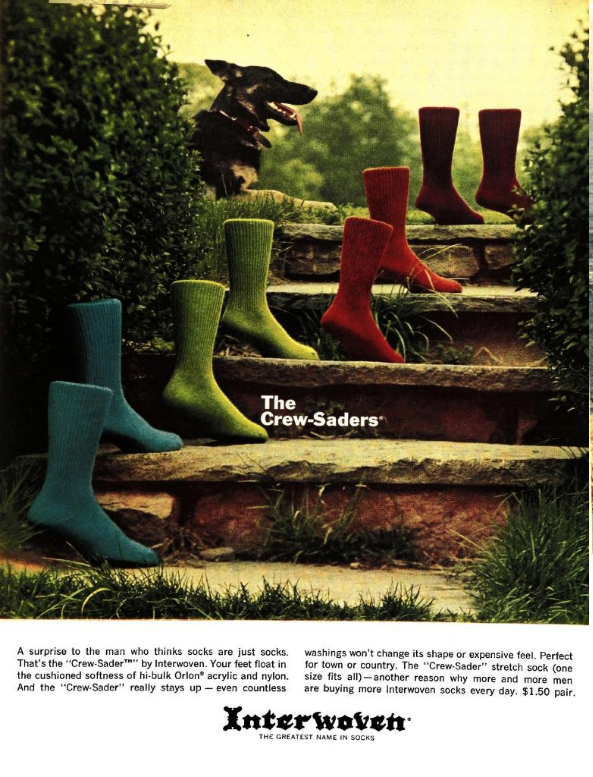
Source.
Posted By: Paul - Thu Mar 12, 2020 -
Comments (6)
Category: Business, Advertising, Fashion, Dogs, 1960s
Bollywood Beatles
Posted By: Paul - Tue Mar 10, 2020 -
Comments (2)
Category: Music, Homages, Pastiches, Tributes and Borrowings, 1960s
Radioactive Vending Machine Tokens
Sometimes vendors would like to sell relatively high-value items in vending machines. That is, merchandise worth more than a candy bar. Nowadays that's not a problem because there's technology that can scan paper currency or read credit cards, making larger transactions possible.But back in the 1960s, vending machines relied on coins for payment, so selling high-value merchandise wasn't practical. Especially since the machines could only measure weight, shape, and size to determine if the coins were real — and these characteristics are easy to fake with low-value blanks.
The British printing company Thomas de la Rue devised a solution: radioactive vending machine tokens.
Its researchers realized it would be possible to create tokens made out of layers of radioactive materials such as uranium and carbon14. These tokens would emit unique radioactive signatures that could be measured by Geiger counters inside a vending machine. Such tokens wouldn't be easy to forge. The company patented this idea in 1967.
I'm not aware that any vending machines accepting radioactive tokens were ever put into to use.
I imagine they would have suffered from the same problem that plagued other efforts to put radiation to practical, everyday use — such as the radioactive golf balls we posted about a few months ago (the radiation made it possible to find the balls if lost). The radiation from one token (or golf ball) wasn't a health hazard, but if a bunch of them were stored together, then the radiation did become a problem.
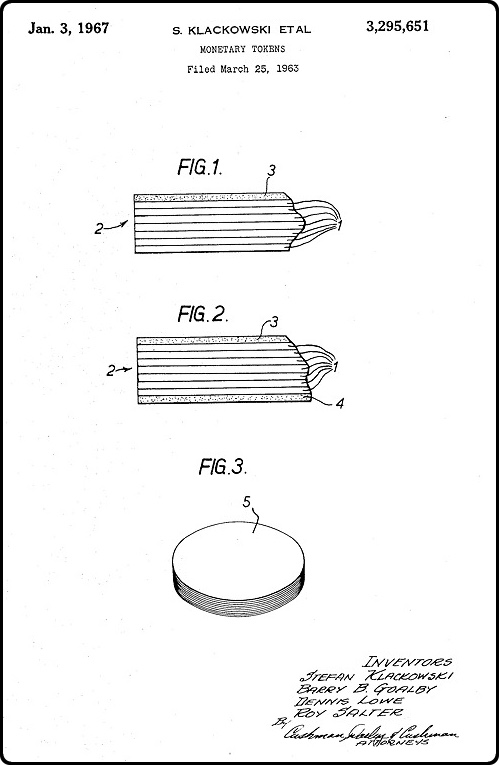
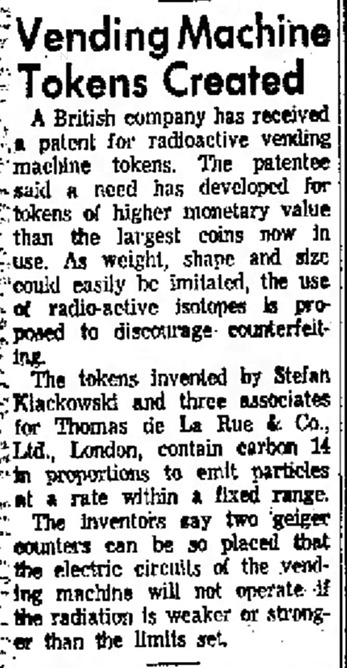
Nashua Telegraph - Jan 11, 1967
Posted By: Alex - Sun Mar 08, 2020 -
Comments (3)
Category: Inventions, Patents, Atomic Power and Other Nuclear Matters, 1960s
Dracula Cha-Cha-Cha
Posted By: Paul - Sat Mar 07, 2020 -
Comments (1)
Category: Humor, Music, 1960s, Fictional Monsters
Canned Wheat
In an effort to sell more wheat, the Kansas Wheat Commission invented canned wheat. It began selling it in 1961 under the brand name Redi-Wheat.By 1963, the product was acknowledged to have been a flop.
Perhaps the problem was that it wasn’t clear what canned wheat was. A kind of oatmeal in a can? I'm not sure. The only description I could find was in an article in the Muscatine Journal (Jan 12, 1962), and it really didn't shed much light on the matter:
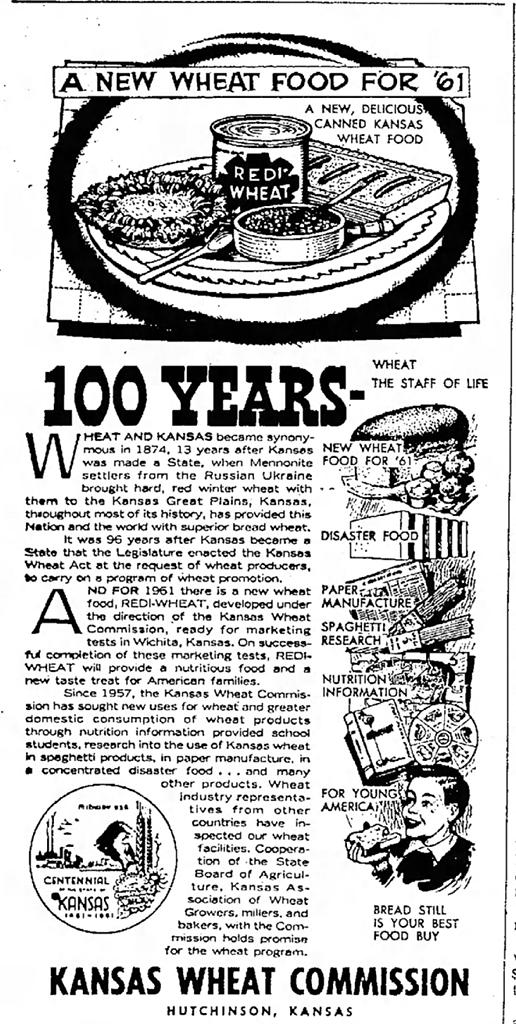
Emporia Gazette - Feb 23, 1961
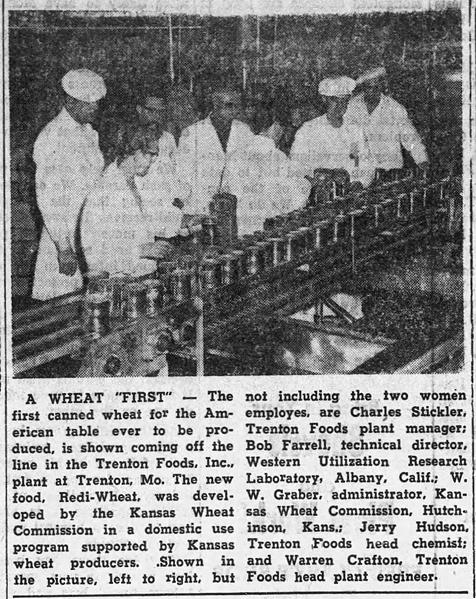
Council Grove Republican - Feb 22, 1961
(Note the caption names all the men in the photo, but purposefully excludes the two female employees)
Posted By: Alex - Sat Feb 29, 2020 -
Comments (10)
Category: Food, 1960s

| Who We Are |
|---|
| Alex Boese Alex is the creator and curator of the Museum of Hoaxes. He's also the author of various weird, non-fiction, science-themed books such as Elephants on Acid and Psychedelic Apes. Paul Di Filippo Paul has been paid to put weird ideas into fictional form for over thirty years, in his career as a noted science fiction writer. He has recently begun blogging on many curious topics with three fellow writers at The Inferior 4+1. Contact Us |




